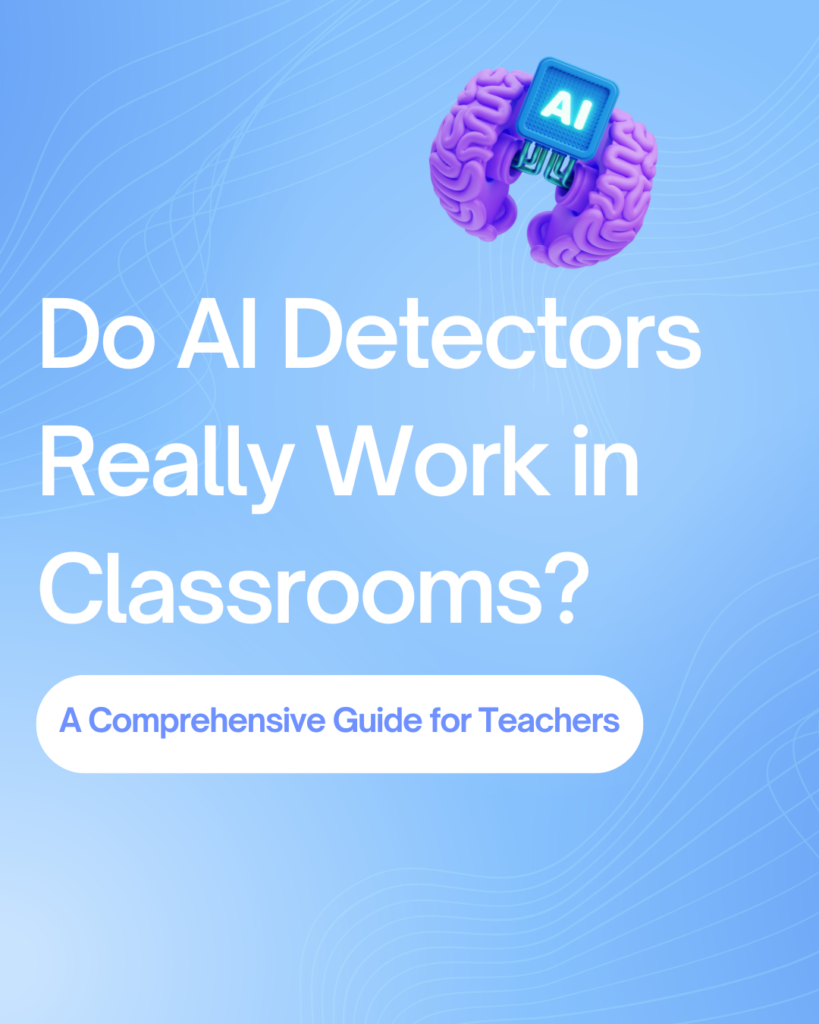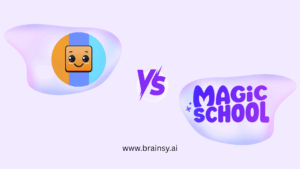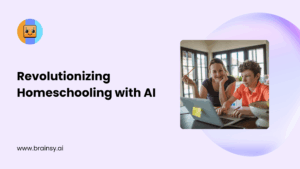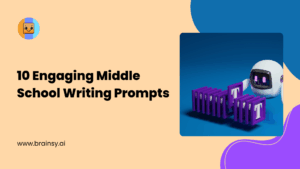Introduction to AI Detectors in Education
The question of the day – do AI detectors really work in classrooms?
In the rapidly evolving landscape of education, technology plays a pivotal role in shaping how we teach and learn. Among these technological advancements, AI detectors have emerged as a significant tool for educators. These tools are designed to identify AI-generated content, ensuring that academic integrity is maintained in an age where students have unprecedented access to AI-driven resources.

Free lesson plan generator here 👈
AI detectors are particularly relevant in educational settings where the use of AI by students can sometimes blur the lines between original work and machine-generated content. This guide aims to provide educators with a comprehensive understanding of how these detectors function, their effectiveness, and their role in preserving the sanctity of education.
As we delve deeper, we’ll explore various aspects of AI detectors, including their challenges and limitations, and assess their capability to identify AI-generated student work. This will enable teachers to make informed decisions about integrating these tools into their teaching strategies effectively.
Evaluating the Performance of AI Content Detectors
AI detectors are sophisticated software applications designed to identify content generated by AI models, such as ChatGPT. These detectors employ algorithms that analyze text for patterns, inconsistencies, and other indicators that suggest machine-generated content. Understanding how these tools work is crucial for educators who wish to leverage them effectively.
The primary function of AI detectors is to maintain academic integrity by ensuring that students submit original work. They do this by scanning written submissions for signs of AI involvement. Detectors often use a combination of linguistic analysis, statistical methods, and machine learning models to identify content that deviates from human writing styles.
For teachers, understanding these mechanisms is essential. It allows them to interpret the results provided by AI detectors accurately and make informed decisions about student assignments. By recognizing the strengths and limitations of these tools, educators can better manage their expectations and use AI detectors as a supplement to traditional evaluation methods.
How Effective Are AI Detectors in Catching ChatGPT?
The effectiveness of AI detectors in identifying content generated by advanced AI models like ChatGPT varies. While these detectors have made significant strides, there are still challenges that can impact their performance. To evaluate their effectiveness, one must consider the evolving nature of AI technology itself.
AI models like ChatGPT are continuously improving, with each iteration becoming more adept at mimicking human writing styles. This evolution presents a challenge for detectors, which must keep pace with these advancements to remain effective. As a result, the effectiveness of AI detectors is often contingent on their ability to update and refine their algorithms.
Despite these challenges, many AI detectors have demonstrated high accuracy rates when identifying AI-generated content. However, their effectiveness can differ depending on various factors such as the complexity of the text, the subject matter, and the specific AI model used. Teachers must stay informed about the capabilities and limitations of these tools to use them effectively in their classrooms.
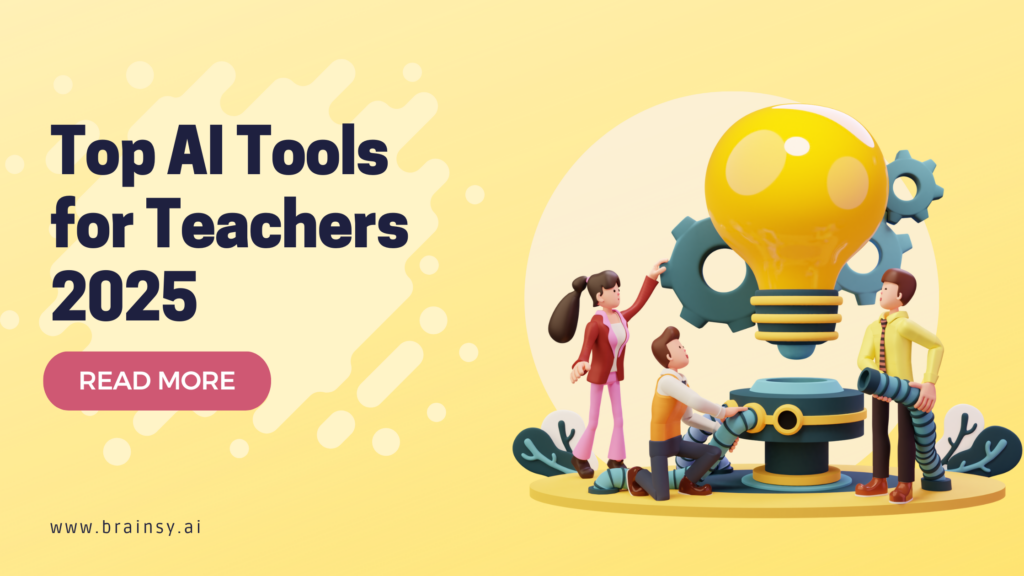
Challenges and Limitations of AI Detectors
While AI detectors offer valuable insights, they are not without their challenges and limitations. One of the primary issues is the potential for false positives, where human-generated content is mistakenly flagged as AI-generated. This can occur due to the sophisticated nature of some human writing, which may resemble AI patterns.
Another limitation is the adaptability of AI detectors. As AI models like ChatGPT continue to evolve rapidly, detectors must also adapt to changes in AI-generated text styles. This requires constant updates and improvements to detection algorithms, which may not always be feasible for all educational institutions.
Moreover, AI detectors may struggle with nuanced or creative writing, where the line between human and AI-generated content can be particularly blurred. This highlights the importance of using AI detectors as a supplementary tool rather than a definitive solution. Teachers must combine these tools with their judgment and understanding of student capabilities for the best outcomes.
Can Teachers Detect AI-Generated Student Essays?
With the growing sophistication of AI models, teachers face increasing challenges in identifying AI-generated essays. While AI detectors provide significant support, educators must also rely on their experience and intuition to discern machine-generated content from student work.
Teachers can often detect AI-generated essays by focusing on specific markers such as coherence, depth of analysis, and creativity. AI-generated essays may lack the nuanced understanding and personal insights that characterize human writing. Teachers can use these markers as a guide, but it requires practice and familiarity with both AI capabilities and student writing styles.
Furthermore, open communication with students about the use of AI tools is crucial. Educators should encourage students to express their ideas authentically and emphasize the importance of original work. By fostering a culture of integrity and creativity, teachers can help students understand the value of their contributions beyond mere academic performance.
AI Tools for Preventing Cheating in Online Learning
The rise of online learning has heightened the need for effective tools to prevent cheating. AI detectors are among the many technologies that educators can use to uphold academic integrity in virtual classrooms. These tools, when used in conjunction with other strategies, can significantly reduce instances of academic dishonesty.
AI detectors can be integrated into online learning platforms to automatically scan student submissions for AI-generated content. This integration allows for real-time monitoring and immediate feedback, which can deter students from relying on AI to complete their assignments.
Beyond AI detectors, other tools such as plagiarism checkers, proctoring software, and secure testing environments also play a crucial role in maintaining academic integrity. Combined, these technologies provide a comprehensive approach to preventing cheating, ensuring that online assessments are as rigorous and fair as their in-person counterparts.

ChatGPT Detection in High School Classrooms
High school classrooms present unique challenges and opportunities for implementing ChatGPT detection. As students become more tech-savvy, the potential for using AI tools increases, making it essential for teachers to have effective detection methods in place.
In high schools, AI detectors can be used to monitor written assignments and projects for AI-generated content. Teachers can also incorporate lessons on the ethical use of AI tools, helping students understand the implications of relying on AI for academic work. This educational approach not only aids in detection but also fosters responsible technology use among students.
Moreover, high school educators can leverage AI detectors to tailor their teaching methods. By assessing the frequency and context of AI-generated content, teachers can identify areas where students may need additional support or engagement. This insight allows for targeted interventions that enhance learning outcomes and reduce reliance on AI tools.
Comparing AI Detectors for Student Assignments
When selecting AI detectors for student assignments, educators must consider several factors to ensure they choose the most effective tool for their needs. These factors include accuracy, ease of use, integration capabilities, and cost.
- Accuracy: The primary criterion for selecting an AI detector is its accuracy in identifying AI-generated content. Educators should look for tools with high detection rates and minimal false positives to ensure reliable results.
- Ease of Use: Teachers require tools that are user-friendly and easy to implement in their existing workflow. Detectors with intuitive interfaces and clear reporting features can save educators time and effort.
- Integration Capabilities: Compatibility with existing educational technologies is essential for seamless integration. AI detectors that can be easily incorporated into learning management systems or other digital platforms offer added convenience.
- Cost: Budget constraints are a reality for many educational institutions. Educators should weigh the benefits of a particular AI detector against its cost to ensure they are making a financially sound decision.
By evaluating these factors, teachers can select AI detectors that best meet their needs and contribute to an effective learning environment.
Future of AI Detection in Educational Settings
The future of AI detection in education is promising, with ongoing advancements poised to enhance the capabilities of these tools. As AI models continue to evolve, detectors will need to become more sophisticated to keep pace with new challenges and opportunities.
One potential development is the integration of AI detectors with other educational technologies to create a comprehensive academic integrity framework. This integration could include features like adaptive learning analytics, which offer personalized insights into student performance and potential areas of concern.
Additionally, AI detection tools may evolve to include more advanced features such as real-time content analysis and feedback mechanisms. These innovations would allow educators to provide immediate guidance to students, promoting a deeper understanding of academic integrity and ethical technology use.
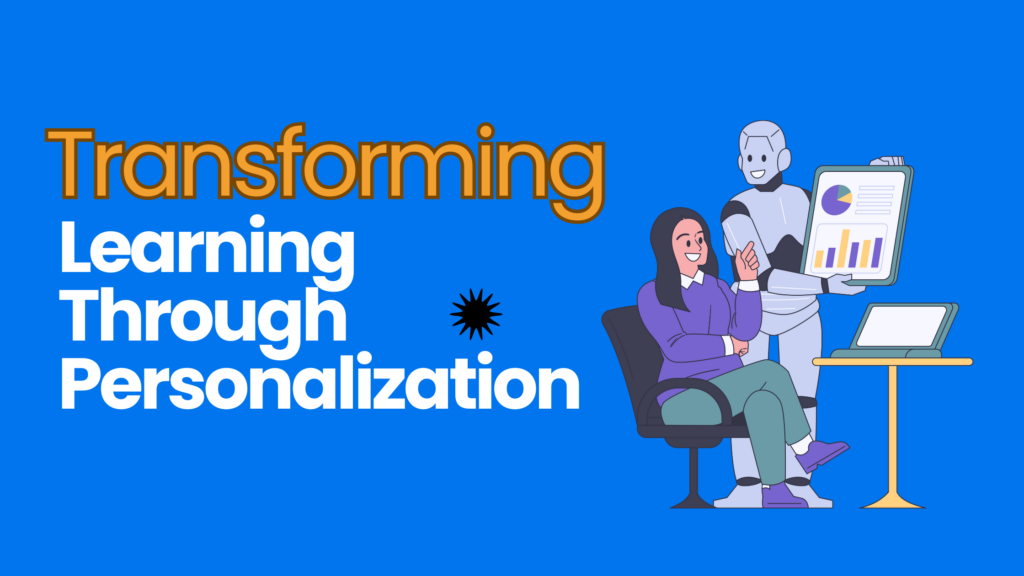
Conclusion: The Role of AI Detectors in Maintaining Academic Integrity
AI detectors play a crucial role in maintaining academic integrity in education, offering a valuable tool for educators navigating the complexities of AI-generated content. While these detectors are not without their challenges, their continued development and integration into educational settings hold great promise for the future.
Teachers must remain informed about the capabilities and limitations of AI detectors to use them effectively. By doing so, they can foster an environment of honesty, creativity, and innovation, ensuring that students understand the importance of original work and ethical technology use.
As we move forward, it is essential for educators to embrace these tools not as a replacement for traditional teaching methods but as a supplement that enhances the educational experience. By doing so, we can uphold the principles of academic integrity and prepare students for a future where technology and education are inextricably linked.

